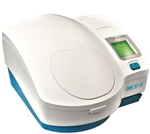Made up of multiple analytical modules with unique sample preparation processes, hematology analyzers are highly specialized instruments used to count the number of white blood cells, red blood cells, and platelets. They assist in the diagnosis of various diseases such as infections, anemia, viruses, diabetes, genetic problems, and cancer. According to a recent report from Research and Markets, the global hematology analyzers and reagents market is projected to reach USD 4.98 billion by 2023 from USD 3.31 billion in 2018, at a CAGR of 8.5%. The major factors expected to drive the market's growth during the forecast period include:
- Technological advancements in hematology analyzers and reagents
- Integration of flow cytometry techniques with hematology analyzers, and
- The increasing incidence of blood disorders
Based on price range, the market is segmented into high-end, mid-range, and low-end hematology analyzers. Attributed to the reliability, high accuracy, flexibility, ease of use, and multi-parameter testing capabilities, high-end hematology analyzers segment is expected to attain the highest growth during the forecast period 2018-2023.
Geographically, the Asia Pacific is expected to register the highest growth rate due to the increasing geriatric population coupled with the growing incidence of thalassemia, sickle cell anemia, and leukemia. Other factors that are contributing to the high growth of this segment include: improved healthcare infrastructure in countries like Japan, China, and Australia, rising number of general surgeries and organ transplantations, and the growing number of ongoing research activities.
The key players of the hematology analyzers and reagents market are Sysmex (Japan), Danaher (US), Nihon Kohden (Japan), Siemens (Germany), Abbott Laboratories (US), Boule Diagnostics (Sweden), HORIBA (Japan), Bio-Rad Laboratories (US), BioSystems (Spain), Diatron (Hungary), Drew Scientific (US), EKF Diagnostics (UK), Mindray (China), Ortho Clinical Diagnostics (US), and Roche (Switzerland) among others.
The report notes that the high cost of hematology analyzers, product recalls, and slow adoption of advanced hematology instruments in emerging countries could restrain the growth of the hematology analyzer market.



